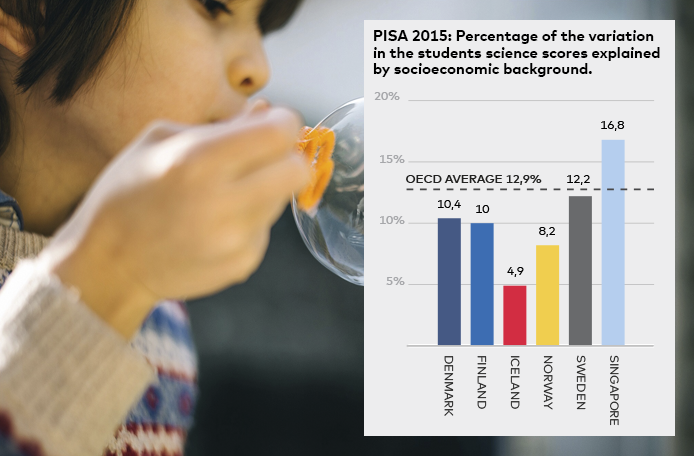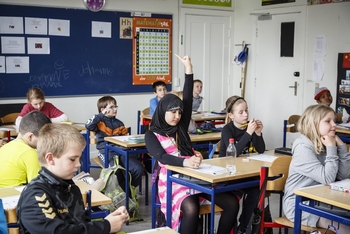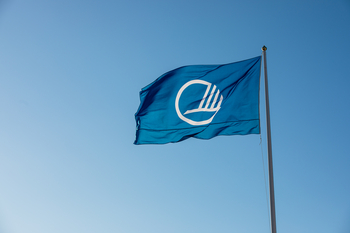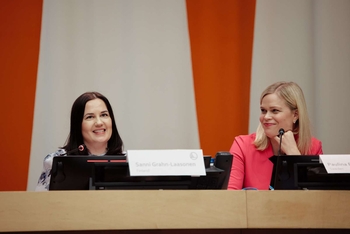Nordic PISA performance: Positive trend with warning signs

Denmark, Sweden and Norway are responsible for the positive trend in the performance tests, with better PISA results in all tests for the first time since 2000. The data puts four of the Nordic nations above the OECD average in the latest results published in December.
Despite lower scores twice in a row, Finland remains above the OECD average, while Iceland is below it.
Nordic success story?
Broadly speaking, the results seem to point to a Nordic success story, but Pasi Sahlberg, the internationally acclaimed Finnish school researcher, hesitates to accept that description.
“No, but it is possible to look at them as an indication that some things have improved in schools in Norway, Denmark and Sweden. Presumably, they have focused more on learning, maths and reading, and that is a good thing. But we shouldn’t draw hasty conclusions from just a single set of results,” he says.
Sahlberg maintains that better PISA performance also reflects political focus on the very subjects on which PISA concentrates and that it would have been more surprising if the trend had continued in the other direction.
No benchmarks for inclusion and democracy
“Historically, the Nordic schools have had much wider ambitions than just to succeed in the areas measured by PISA. Schools are also meant to teach about democracy, inclusion and languages. It would be interesting to measure the quality of these topics,” Sahlberg adds.
In the 2000s, Denmark, Sweden and Norway all reformed their school systems – at least in part in order to improve their PISA performance – and yet even their governments are wary of linking the latest results to those reforms.
In Denmark, the greatest progress has been made in maths, with the Danes now ranking highest among the Nordic nations and at no. 7 in the OECD, which represents a distinct improvement.
Commenting on the PISA results, the Danish Minister of Education, Merete Riisager, praised the country’s maths teachers rather than refer to school reform.
Less equality
Even although the former Swedish Minister of Education, Jan Björklund, sees the progress as a validation of the school reforms introduced by the centre-right government in which he served, both he and the current minister, Gustav Fridolin, are concerned at poorer scores for equality in schools.
One of the Nordic strengths has been – and is – the ability to achieve roughly the same results in the tests, irrespective of the individual school or location. Now, the countries are drifting apart. In two of them, the data reveals growing differences between socio-economically disadvantaged pupils and pupils from more comfortable backgrounds. The Nordic countries are still better than the OECD average, i.e. a smaller proportion of the variation in the results in the Region is explained by socio-economic background than elsewhere. The OECD average is 12.9%. Singapore, which usually comes out top in the PISA knowledge tests, scored 16.8%, indicating that its schools are not as good at compensating for socio-economic inequality.
Although Swedish schools have been among the best at compensating for social inequality in the past, Sweden now ranks poorest among the Nordic nations and has almost reached the OECD average.
“We have turned into a mediocre country in terms of these inequality benchmarks. Schools in most of the OECD countries and all of our Nordic neighbours are better at addressing inequality,” Gustav Fridolin told a magazine for Swedish teachers in December.
Major differences in the Nordic Region
By way of comparison, the Nordic figures are Sweden 12.2%, Denmark 10.4%, Finland 10%, Norway just under 9% and Iceland 5%.
While socio-economic background has also started to exert more of an influence on the PISA results in Finland, Denmark improved on this benchmark, although this will have to be confirmed by the next set of results before we can talk about a trend.
“I think equality is something that we will have to work on in the Nordic Region. Segregation is growing, due to things like the private schools in Denmark and parental choice of school in Sweden. If the Nordic countries do nothing, we will see growing inequality in test results,” Sahlberg points out.
A clearer picture of how well the Nordic schools compensate for social and ethnic background will emerge when Pisa Ethnic is published this spring.

Facts: PISA results from a Nordic perspective
-
Despite lower performance in science and maths, Finland is still the top Nordic nation overall, and significantly above the OECD average (top five in the OECD in all areas tested).
-
Except for Iceland, the Nordic nations are above the OECD average on all three tests (mathematics, science and reading)
-
The proportion of high-performance readers has increased in all of the Nordic countries
-
Students with a different ethnic background, both first and second generation immigrants, do worse in science than native students. PISA Ethnic will address this theme in spring 2017
- Social background has less impact on the PISA results in the Nordic countries than in the OECD as a whole. Sweden does best, with a scored calculated by the OECD of 12.2%, followed by Finland at 10%, Denmark at 10.4%, Norway at 8% and Iceland at 5%. The OECD average is 12.9%.
- All of the Nordic countries rank lower in the 2015 PISA results than in 2000 and 2006. However, Sweden, Norway and Denmark made progress in the period 2012–2015, while Iceland and Finland fell back slightly.
- The PISA results continue to show a large gender gap in reading, with girls doing a significantly better than boys. However, the gap did fall in the period 2012–2015.
-
PISA stands for Programme for International Student Assessment and is run by the OECD
- Read more about PISA from a Nordic perspective




